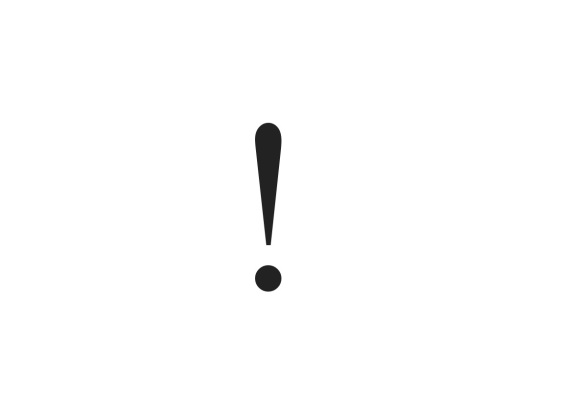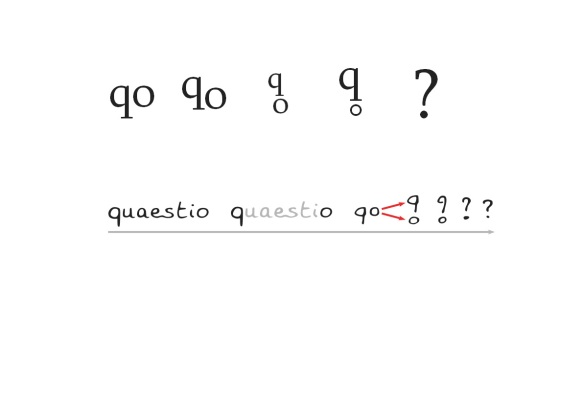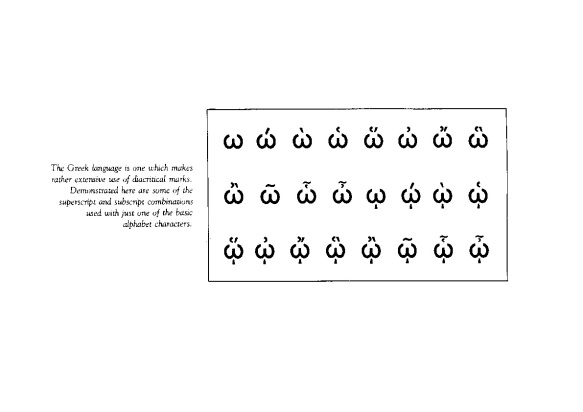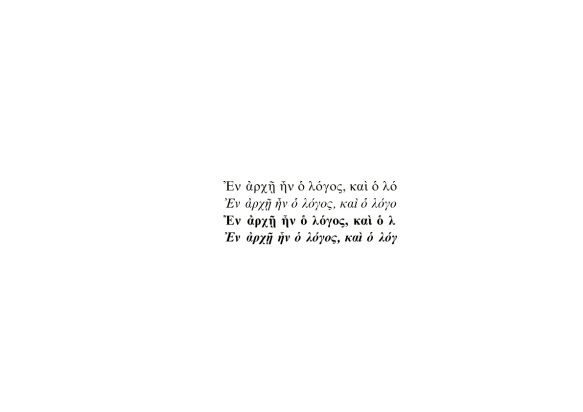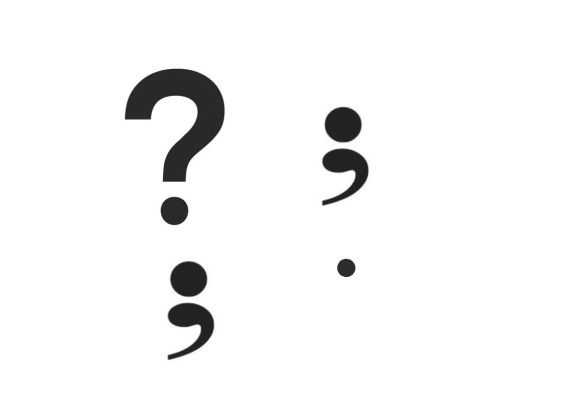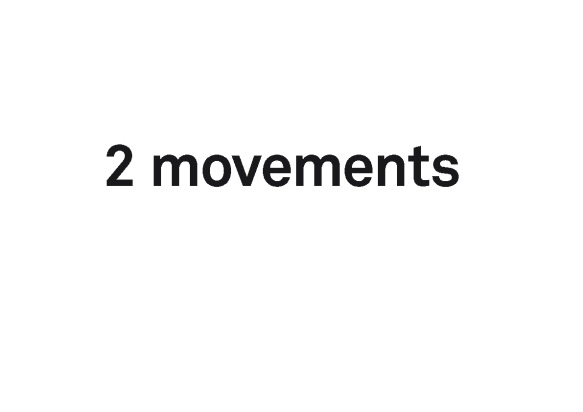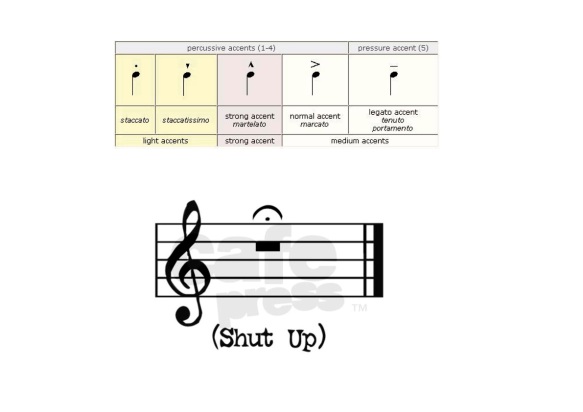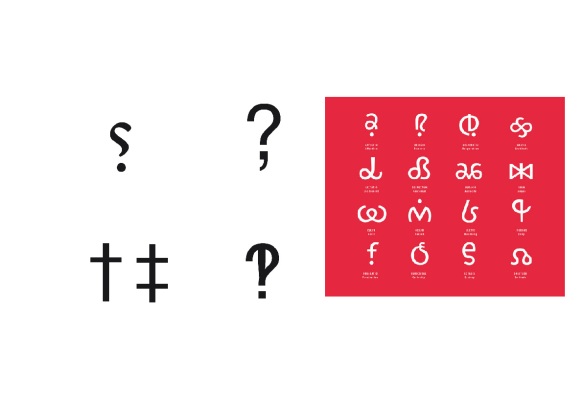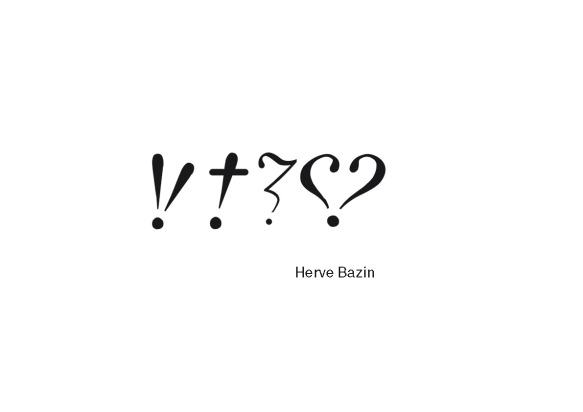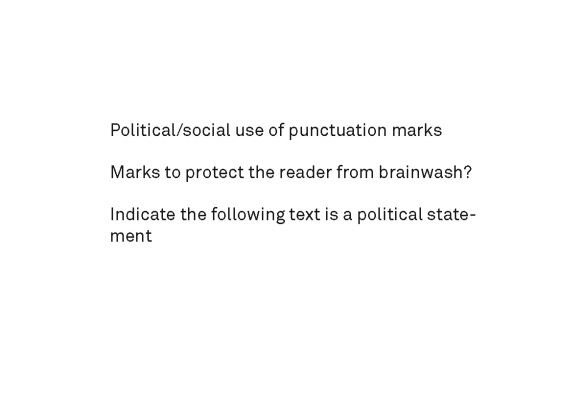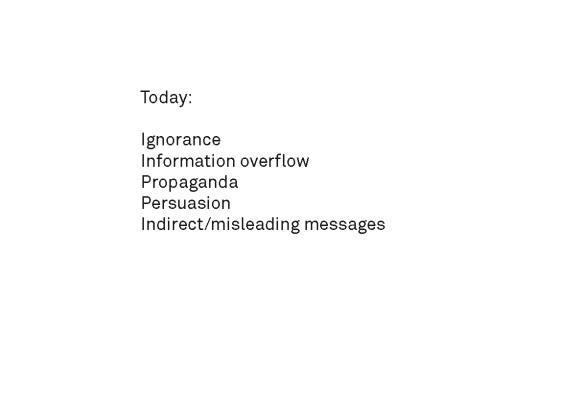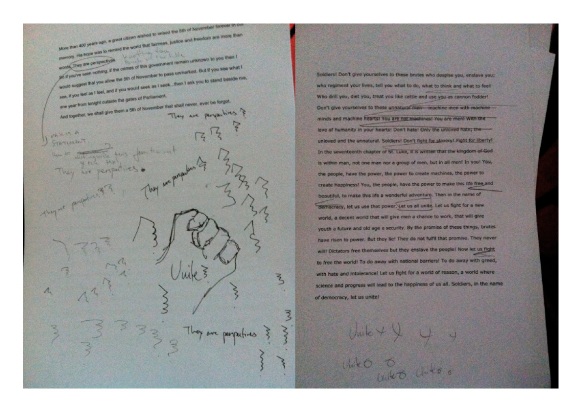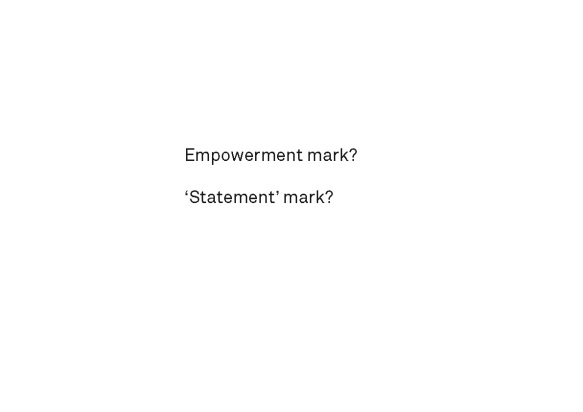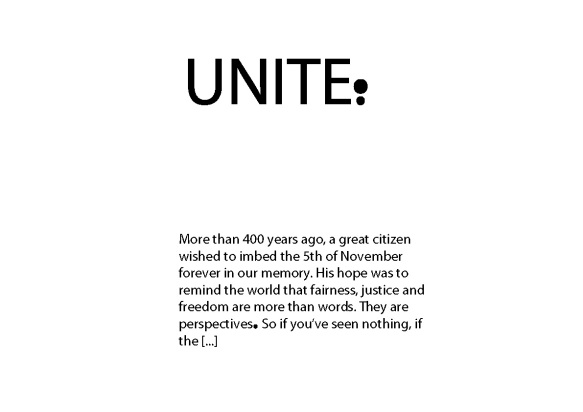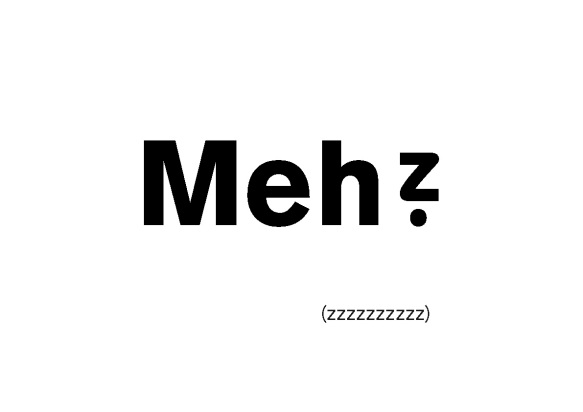The brief we had for last Wednesday was set by Jonathan Barnbrook, which asked us to create a new punctuation mark for the English language.
The punctuation mark would express an idea or ideology. It can be experimental, serious or humorous. Examples given:
Punctuation mark could express:
- the feeling of ‘believing in nothing’
- the idea of the text is part of ‘information overload’
- commercial text ‘would you like fries with that?’
- ambivalence, feeling two opposite things at once
- a pause which has more meaning and truth than the words around it
He also encouraged us to think about:
- consider how punctuation is used, the new mark will have to be simple, work big and small and in one colour.
- think about the uses of typefaces and language, things like texting and email have changed the way we see and write language.
- if it is appropriate or you are feeling particularly eager, you can do more than one punctuation mark.
- this project sounds quite heavy but it can be taken as lightly or as seriously as you want.
- choose your subject matter within a specified time limit, otherwise you can spend ages worrying which area to follow.
- should this punctuation mark have some time factor involved or be completely static. your idea should shape the way it is to be presented.
First of all punctuation is only seen in writing, it’s something that structures speech but is not actually seen when we speak. It creates a relationship between two sentences.
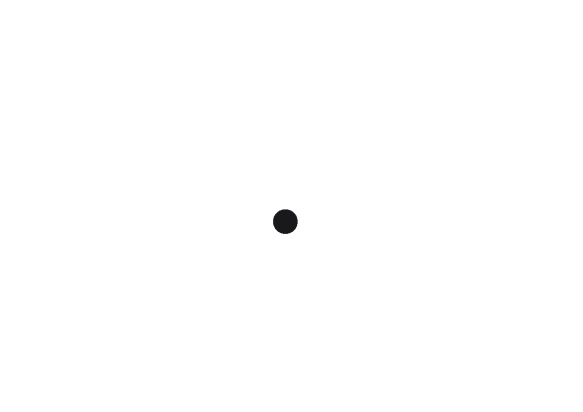
It’s also visible that each punctuation mark evolved as some kind of a symbol. For example the full stop for me represents a cycle, like when a sentence finishes, a cycle, a circle finished, hence the shape of it.
With the question mark, the mark evolved from the word question itself
Looking at punctuation marks I remembered the Greek polytonic system and how much I hated Ancient Greek at school. SOOO many punctuation marks, too many things to remember. I actually tried to refresh my memory and see if I can learn it now, and surprisingly I could understand it better now. Also the punctuation marks made sense in Ancient Greek when specific letters had different lengths of speech or a slightly different pronunciation.
Also, the greek question mark is the english semi colon, and an upper-full stop is the semicolon for greek.
Punctuation marks should be really easy to write, and as I observed they have to be maximum 2 movements of handwriting, otherwise it becomes a smiley or a symbol.
Talking about movements, I relate to music and different accents and symbols used to ‘colour’ the melody. for example the thick dash you see above means pause, and the dot with the line above means ‘in continuation’, so in a way, if that could be applied to a text can be translated as ‘shut up’! (the picture is something I found on the internet but I thought I should include this as it was very funny).
There are many people that already created new punctuation marks, and there are some that already exist in the english language! For example on the left of the picture above, everything except the small reversed question mark (which means irony) already exists in the english language.
These are some punctuation marks the poet Herve Bazin created, from left to right is Acclamation, Certainty, Doubt, Love.
So what my punctuation mark could be? I started thinking about political and social use of punctuation marks, how can something protect the reader from political statements or brainwash?
In today’s life themes going around are the ones I stated above, well in my opinion, that need to be expressed in punctuation marks.
I remembered this speech by Charlie Chaplin and how powerful this is, maybe it seems to me like that because I never saw him talking, and when he talked he said such meaningful things.
Of course later the next step was to look at V for Vendetta and his revolutionary speech.
I started analysing these two speeches and how to make a punctuation mark showing empowerment. The fist was a visual I started picking out. Also a mark was needed to show that something is a statement.
I started playing around with these ideas and being scared of creating a punctuation mark that doesn’t look like one, I sticked to the dot. First I started seeing empowerment in the means of a bigger dot above the normal fullstop. Then a bolder fullstop for sentences that make a statement. Hm, these need development.
I suddenly jumped from there and thought about ignorance. Ignorant to change the system etc. I related ignorance to sleep and the repeated z’s for indicating sleep in graphic novels. So adopted it to make a punctuation mark for ignorance. Obviously it needs some more development, but this is a starting point.
My feedback was positive on the research I’ve done for the revolutionary speech and I was encouraged to take that further – I’m always interested in language anyway.
Also, it’s the first time I’ve done a presentation for my project, I always take the final outcome or mock-ups and stuff, without putting them into a structure. Maybe it’s an intuitive sign that I’m getting back to being neat again, as one of my goals for RCA was to get dirty (maybe unorganised too) and very experimental.

